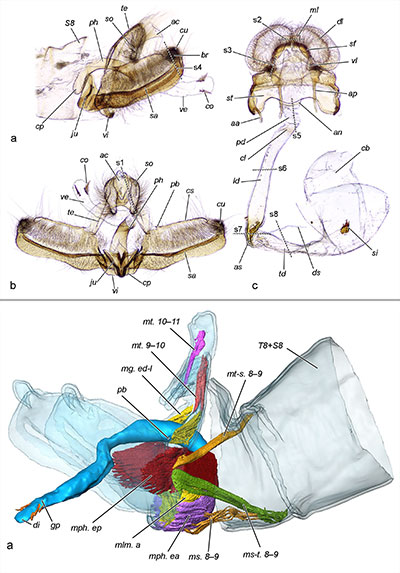|
Welcome to the genitalia library. It is to be hoped that this feature of the website will prove to be valuable to professional lepidopterists as well as to collectors who examine genitalia to aid in their identification of specimens. It is further to be hoped that the lepidopteran community will collaborate in the effort to build this library by contributing images.
If you would like to contribute photographs or illustrations to be included in this library, please email MPG to make arrangements. In the very near future a genitalia library desk will be staffed at Mississippi Entomological Museum.
We thank Brian Goodey and many contributors to the Lepidoptera Dissection Group (UK) for their generosity in permitting us to include in our new library more than 300 genitalia photographs of 200 species that are found also in North America. These will be among the first genitalia to be presented from the new database that is now under construction.
We will welcome suggestions of references to be included in a page of links to online tutorials for preparing dissections, slide mounts and photography. These may be web pages, document files or videos that will be helpful to students.
For a deep understanding and apprecition of genitalia, we highly recommend Zlatkov et al. (2023), First 3-D reconstruction of copulation in Lepidoptera: interaction of genitalia in Tortrix viridana (Tortricidae) . The online version contains supplementary material which includes videos of several models of genitalia rotated in three dimensions. This remarkable work takes so much of the mystery out of genitalia. Professionals and collectors to novice enthusiasts will find this resource invaluable.
|
 Tortrix viridana ♂ ♀ - Zlatkov et al. (2023)
Tortrix viridana ♂ ♀ - Zlatkov et al. (2023)
|





